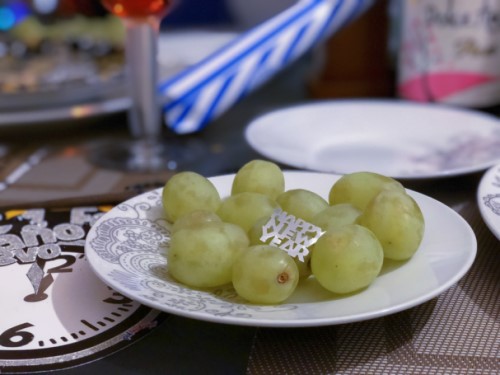Ring in the New Year with Good Luck Foods

Many people see the new year as a time for renewal and a chance to reach new goals. For centuries, certain foods have been celebrated as symbols of good luck. Ring in your new year by eating some of these good luck foods.
As a DaVita dietitian, I often discuss ways to incorporate different foods my patients love into their diet. Some foods may be high in potassium and phosphorus, but may be included by staying within the suggested portions. Talk to your dietitian about including some of your favorite foods and what amount of potassium and phosphorus is right for you.
Visit DaVita.com to download the free Lucky New Year Recipes cookbook with dishes that are delicious and “lucky.” Read on to learn about the history behind some of these lucky foods.
Black-Eyed Peas and Rice
- Black-eyed peas date back to the Civil War when Union soldiers took food crops, leaving only black-eyed peas for Confederate soldiers. This is how the legume became a symbol of prosperity in the South. Rice is often looked at for wealth and fertility.
- Legumes are high in phosphorus and potassium, but by limiting your portion sizes and eating them with rice, you can include them and still keep your potassium and phosphorus in goal. Try this kidney-friendly recipe for Black-Eyed Pea Hash.
Cooked Greens
- Greens symbolize money and good fortune to come in the new year.
- Cooked greens are often looked at as too high in potassium to include in a kidney diet, but by limiting the portion size, you can start your new year off right. Talk to your dietitian about portion sizes and adding more greens to your diet. Try this Southern-Style Collard Greens side dish at your next get-together.
- Acceptable cooked greens for a kidney diet include collards, kale, mustard greens and turnip greens.
Pomegranates
- Pomegranates eaten on New Year’s Day represent fertility, birth, life and abundance.
- Make sure to limit pomegranate seeds to 1/2 cup because of potassium. A half cup of pomegranate seeds contains 205 mg of potassium.
- Add a festive and bubbly drink to your holiday meal with this Pomegranate Refresher.
- Most dialysis patients need to drink no more than 32 ounces of fluid per day. Talk to your dietitian and nurse about what fluid goal is right for you.
Grapes
- Eating 12 grapes at midnight is thought to bring good luck to each month of the new year.
- Grapes are low in potassium and can be included in a kidney-friendly diet.
- Looking for a fun snack to help quench your thirst? Many dialysis patients eat frozen grapes instead of ice to help control their thirst and fluid intake. Try this “cool” Frosted Grapes recipe.
To see more kidney-friendly lucky food ideas, download the Lucky New Year Recipes cookbook today.
Additional Kidney Diet Resources
Visit DaVita.com and explore these diet and nutrition resources:
- DaVita Food Analyzer
- DaVita Dining Out Guides
- Today’s Kidney Diet Cookbooks
- DaVita Kidney-Friendly Recipes
- Diet and Nutrition Articles
- Diet and Nutrition Videos
- Kidney Smart® Virtual Classes
This article is for informational purposes only and is not a substitute for medical advice or treatment. Consult your physician and dietitian regarding your specific diagnosis, treatment, diet and health questions.

Recent Comments